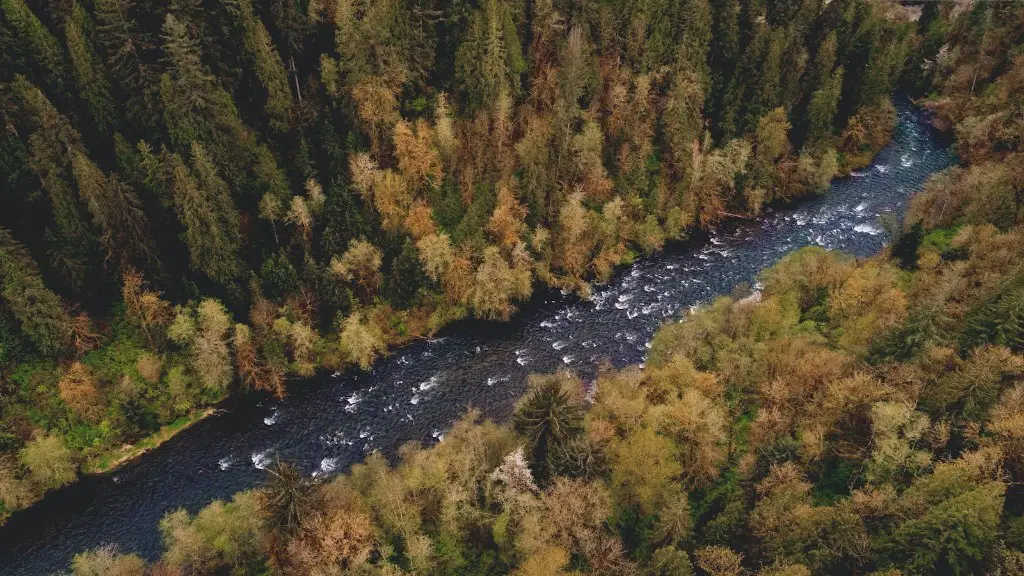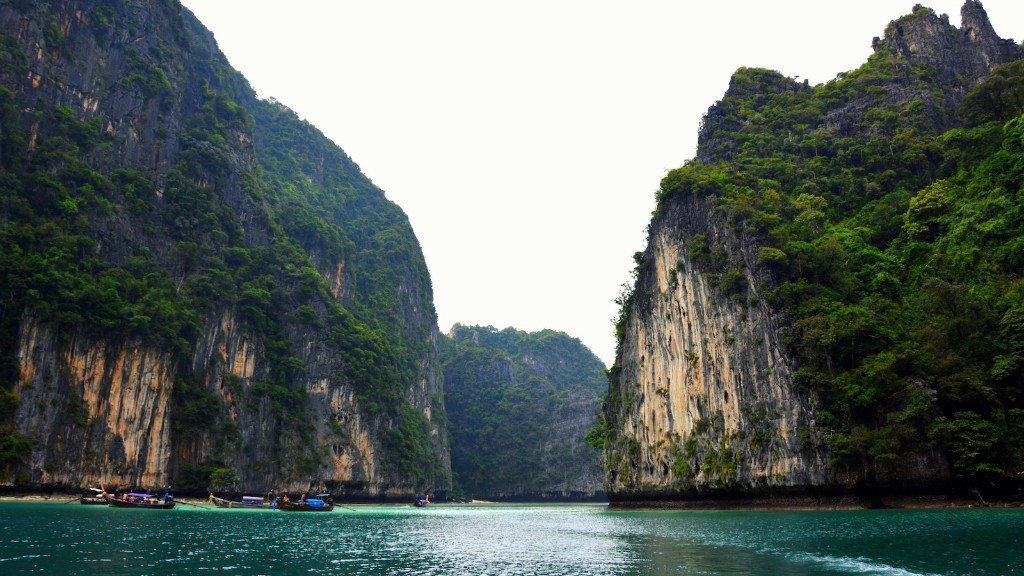The Ganges is the most sacred river to Hindus and is also a lifeline to millions of Indians who live along its course and depend on it for their daily needs. It is worshipped as the goddess Ganga in Hinduism and has been an important factor in the country’s cultural and religious heritage for thousands of years. The river is also a major source of water for irrigation and drinking for many people in India.
The Ganges is beloved by Hindus and is considered a holy river. It is a destroyer of sins and bestower of blessings. The devout believe that bathing in the Ganges at Varanasi washes away all one’s sins and provides liberation from the cycle of birth and death. Hindus also cremate their dead on the banks of the Ganges, believing that this will ensure their passage to heaven. The river is thus both a metaphor for spiritual cleansing and an important place of pilgrimage for Hindus.
What is the significance of the Ganges River?
The Ganges River is one of the most sacred rivers in the Hindu tradition. It is believed to be the personification of the goddess Ganga. Hindus believe that bathing in the river on certain occasions can lead to the forgiveness of transgressions and help attain salvation.
The scientific reason is that water of river Ganga is of course having Bacteriophages, the viruses that eat bacteria, don’t allow bacterial growth were found in the waters of Ganga. A bacteriophage is a virus that infects a bacterium and replicates within the bacterium and destroys it. When these bacteriophages infect a bacterium, they release their genetic material (DNA or RNA) into the bacterium. This genetic material then directs the bacterium to produce more bacteriophages. As the bacterium produces more and more bacteriophages, it eventually bursts and dies. This process is called lysis. The bacteriophages then move on to infect other bacteria.
Why is the Ganges special to Hindus
The river is an important part of Hinduism and is seen as a goddess. Hindus believe that bathing in the river helps to cleanse the soul and that people are baptised in the river. The ashes of people who have died are also poured into the river.
The Ganges river in India is one of the most important rivers in the world. It is more than 2,500km long and has the most populated river basin in the world. Hundreds of millions of people and a huge range of wildlife rely on the river Ganges. But pollution, dams and removal of too much water (mostly for agriculture) have affected the flow and health of this vital river.
Why is the Ganges River so dirty?
The main causes of water pollution in the Ganges river are the disposal of human sewage and animal waste, increasing population density, and disposal of industrial waste into the river. The river is also used for irrigation, which can lead to agricultural runoff and contribute to water pollution.
The Ganges River is a vital resource to Asia, providing water for irrigation, drinking, and industry. The river is also worshipped in the Hindu religion as the Mother Ganga. However, the Ganges River faces many threats, including pollution, overuse, and climate change.
What happens if we bath in Ganga?
However, a new study has warned that bathing in Ganga can expose people to high levels of faecal coliform bacteria, which can cause severe diarrhoeal infections.
The study, conducted by the Indian Institute of Technology (IIT) Kanpur, found that the levels of faecal coliform bacteria in the Ganga river are “well above the permissible limit”.
The researchers say that the high levels of faecal coliform bacteria in the river are due to the discharge of untreated sewage and industrial effluents into the river.
They warn that people who bathe in the river or drink its water are at risk of contracting diarrhoeal infections.
The study has been published in the journal Science of the Total Environment.
The report submitted by the State Pollution Control Board indicates that the water of river Ganga is not fit for drinking purpose but is fit for bathing purpose. This is a concerning issue as the river is one of the most important sources of water for many people living in the area. The government needs to take immediate action to improve the quality of the water so that it is safe for people to drink.
Why did Ganga threw her sons in river
The Vasus were a group of eight powerful deities who were the incarnation of eight elements of nature. They were cursed and asked Ganga to end their life when they were born to her on earth. Due to their request, Ganga began drowning each son upon birth while Shantanu watched without questioning.
The Ganges River has been considered a holy river by the people of India for thousands of years. It is also one of the most polluted rivers in the world.
How did the Ganges influence the culture of India?
The river Ganga has been integral to the development of culture and civilizations in India. It has nurtured native culture in its basin, shifted the Indus-Sarasvati basin civilization into its fold, and promoted integration of cultures to develop Indian civilization. The river has been a source of inspiration for artists, musicians, and writers, and has played a significant role in the economic development of the country.
The river water of Ganga- Gangajaal is equated to nectar in Indian traditions due to its purity and sanctity. The ashes of the deceased are also let into this river for it is considered to be a gateway for a peaceful departure to heaven. This shows the reverence that Indians have for this river.
How dirty is the Ganges
The Ganges river is one of the most polluted waterways in the world due to the large amount of sewage that is emptied into it every day. Only about half of the sewage that is dumped into the river undergoes any kind of treatment, leaving the water extremely dirty. This pollution is having a negative impact on the wildlife and ecosystem of the river, as well as the people who rely on it for their livelihoods.
The pollution in the Ganga and other rivers is linked to the high rate of waterborne illnesses in India, which kill an estimated 15 million children each year. The emergence of so-called superbugs in Ganges water samples is another alarming trend, as these bacteria are resistant to most commonly used antibiotics.
Can you swim in the river Ganges?
India’s Ganges River is one of the most heavily polluted bodies of water on the planet. Yet a myth endures that bathing in it, or drinking it, is completely safe. This is unfortunately not the case, and many people who do so end up getting sick. The pollution in the river comes from a variety of sources, including factories, sewage, and even dead bodies. It’s important to be aware of the risks before deciding to take a dip in the Ganges.
The river Ganges is one of the most sacred rivers in India and is also one of the most polluted. The main source of pollution is from the 300+ tanneries that release their effluents (wastewater) into the river. These effluents contain heavy metals like chromium which are extremely toxic. This poses a serious threat to the health of people who use the river water for bathing, drinking, etc.
Can Ganga ever be cleaned
The Ganges basin is being cleaned intensively which has resulted in improving the water quality to never-before standards. The water quality of the Ganga river is now comparable to that of other rivers in the world. This is a major success for the government’s Clean Ganga Mission.
In Hindu mythology the Ganges river was created when Vishnu, in his incarnation as the dwarf brahmin, took two steps to cross the universe. On the second step Vishnu’s big toe accidentally created a hole in the wall of the universe and through it spilled some of the waters of the River Mandakini.
Final Words
The Ganges is a major river in India and one of the holiest rivers for Hindus. It is also a major source of water for irrigation and transportation. The river is important for both religious and economic reasons. Hindus believe that the Ganges is a holy river that can cleanse people of their sins. The river is also an important source of water for agriculture and industry.
The Ganges River is one of the most important rivers in India. It is a holy river for Hindus and is considered to be the place where souls go to be reborn. The river is also important for irrigation and transportation.





